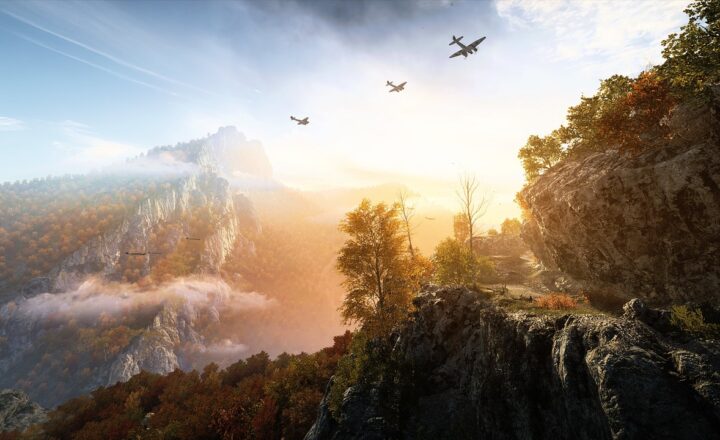Cartoons That Shaped Generations: A Nostalgic Journey Through Animation
November 18, 2024

Cartoons have been a powerful cultural force since their inception, captivating audiences of all ages and leaving a lasting impact on generations. From the vibrant animation styles to the unforgettable characters, cartoons have not only entertained but also educated, influenced societal norms, and reflected cultural shifts. In this article, we will take a nostalgic journey through some of the most significant cartoons that have shaped generations, exploring their themes, characters, and the impressions they left behind.
1. The Birth of Animation: Steamboat Willie (1928)
The world of animated cartoons took a monumental leap forward with the release of Walt Disney’s *Steamboat Willie*. This groundbreaking short film was one of the first to feature synchronized sound, allowing audiences to experience a new level of storytelling and entertainment. Mickey Mouse, a character that would become synonymous with animation and the Disney brand, made his debut, introducing an era characterized by delightful characters and memorable catchphrases.
As the years rolled on, Disney continued to evolve animation, producing classics like *Snow White and the Seven Dwarfs* (1937) and *Fantasia* (1940). These films not only showcased stunning artistry but also indicated the potential of animation as a serious form of entertainment.
2. The Golden Age of American Cartoons: Bugs Bunny and Friends
The 1940s and 1950s marked the Golden Age of animation, with Warner Bros. and other studios introducing a host of iconic characters like Bugs Bunny, Daffy Duck, and Porky Pig. These characters brought humor and wit to the screen, often serving as satirical takes on contemporary society.
Bugs Bunny, with his mischievous personality and catchphrase, “What’s up, Doc?”, not only entertained children but also resonated with adults, making him a timeless character. Cartoons like *Looney Tunes* presented clever storytelling and innovative animation techniques that remain influential.
These characters not only became cherished icons but also shaped the comedic landscape of future animation, paving the way for shows such as *The Simpsons* and *Family Guy*.
3. The Rise of Television: Scooby-Doo and the Mystery Inc. Gang
With the rise of television in the 1960s, cartoons began to diversify, catering to home audiences. *Scooby-Doo, Where Are You!* debuted in 1969, blending comedy, mystery, and adventure. The premise of a group of teenagers solving supernatural mysteries alongside a talking Great Dane tapped into a sense of exploration that appealed to young viewers.
The show’s unique format and relatable characters allowed it to capture the hearts of many, creating a franchise that continues to evolve and thrive today. Scooby-Doo’s lasting impact on popular culture is evident in its various spin-offs, films, and merchandise, establishing a legacy of teamwork, friendship, and skepticism toward the unknown.
4. The 90s Revolution: Rugrats and Nickelodeon
The 1990s brought about a significant shift in animated television, with a focus on more diverse narratives and characters. Nickelodeon’s *Rugrats* introduced audiences to a world through the eyes of babies, showcasing their adventures and imaginative play. This innovative approach resonated with children and parents alike, highlighting themes of friendship, family, and innocence.
Other shows from this era, such as *Doug* and *Hey Arnold!*, tackled real-life issues faced by kids, providing relatable content that often touched upon societal themes, such as multiculturalism and individuality. This was a time when animation began to address actual child experiences, thus heralding a new era of storytelling.
5. The Emergence of CGI: Pixar’s Influence
As technology advanced, the world of animation was transformed, notably with the advent of computer-generated imagery (CGI). Pixar’s *Toy Story* (1995) became the first entirely CGI feature film, revolutionizing how stories were told in animated form. This was the dawn of a new era that blended artistry with technology, bringing characters to life in ways previously thought impossible.
Pixar created a string of successful films that not only appealed to children but also carried deep emotional resonance for adults. Movies like *Finding Nemo*, *Wall-E*, and *Inside Out* used humor and innovation while exploring complex themes like friendship, environmentalism, and mental health—shaping generations by showing that animation could deeply reflect human experiences.
6. The New Millennium: Cartoon Network and Adult Animation
In the 2000s, Cartoon Network began producing shows that catered to more mature audiences, such as *The Powerpuff Girls*, *Dexter’s Laboratory*, and the critically acclaimed *Avatar: The Last Airbender*. These series embraced intricate narratives, character development, and animation styles that pushed the limits of traditional cartoons.
Also, the emergence of shows like *The Simpsons* and *South Park* showcased that animated series could address social issues and controversial topics, thus broadening the scope of the audience for adult animation. This set the stage for a whole new genre and approach to storytelling in animation, further shaping cultural discussions.
7. Conclusion: The Enduring Legacy of Cartoons
From the whimsical adventures of Mickey Mouse to the emotional storytelling of Pixar, cartoons have left an indelible mark on global culture. They have the power to transcend generations, with timeless characters that resonate with children and adults alike.
As we reminisce about our favorite animated shows and films, it’s clear that cartoons serve as a bridge connecting us to our childhoods while also reflecting societal changes over time. The impact of animation will continue to shape future creators and audiences, inspiring new generations while keeping the spirit of nostalgia alive.
In celebrating these cartoons that shaped generations, we embrace their stories, their lessons, and the unique artistry they have contributed to the world.








